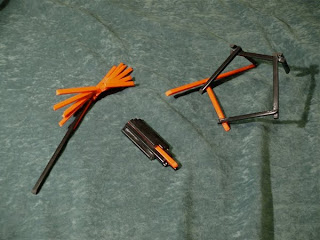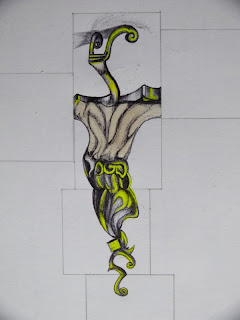Whilst wandering the Melbourne environment, rubbings of interesting textures were made. These textures were then recreated through drawing them within the spaces created by over lapping circles.
From these drawings the textures where then brought back into three dimensions through the use of collage and perspective drawing. The outcomes of the collages are pictured below.


In some cases, the negative spaces was enhanced by cutting away areas of the page.
Next a corner within the room was selected (in this case the curve created by the back-rest and leg of a chair) and recreated in thick cardboard joined together with masking tape.

returning the the texture collages for inspiration, a second 3D element was created. The form is made from wax and the same thick cardboard. It takes the shape reminiscent of a caterpillar with exceedingly well defined dorsal segments.


As can bee seen, the creature has been placed inside the reproduced corner, lurking almost out of sight.


This placement evokes a slightly paranoid feeling. the same feeling induced by the memory of groping around in the dark for the light switch, only to discover instead something unexpected, hairy and oddly squishy, something scarily unidentifiable and.....Alive.






































